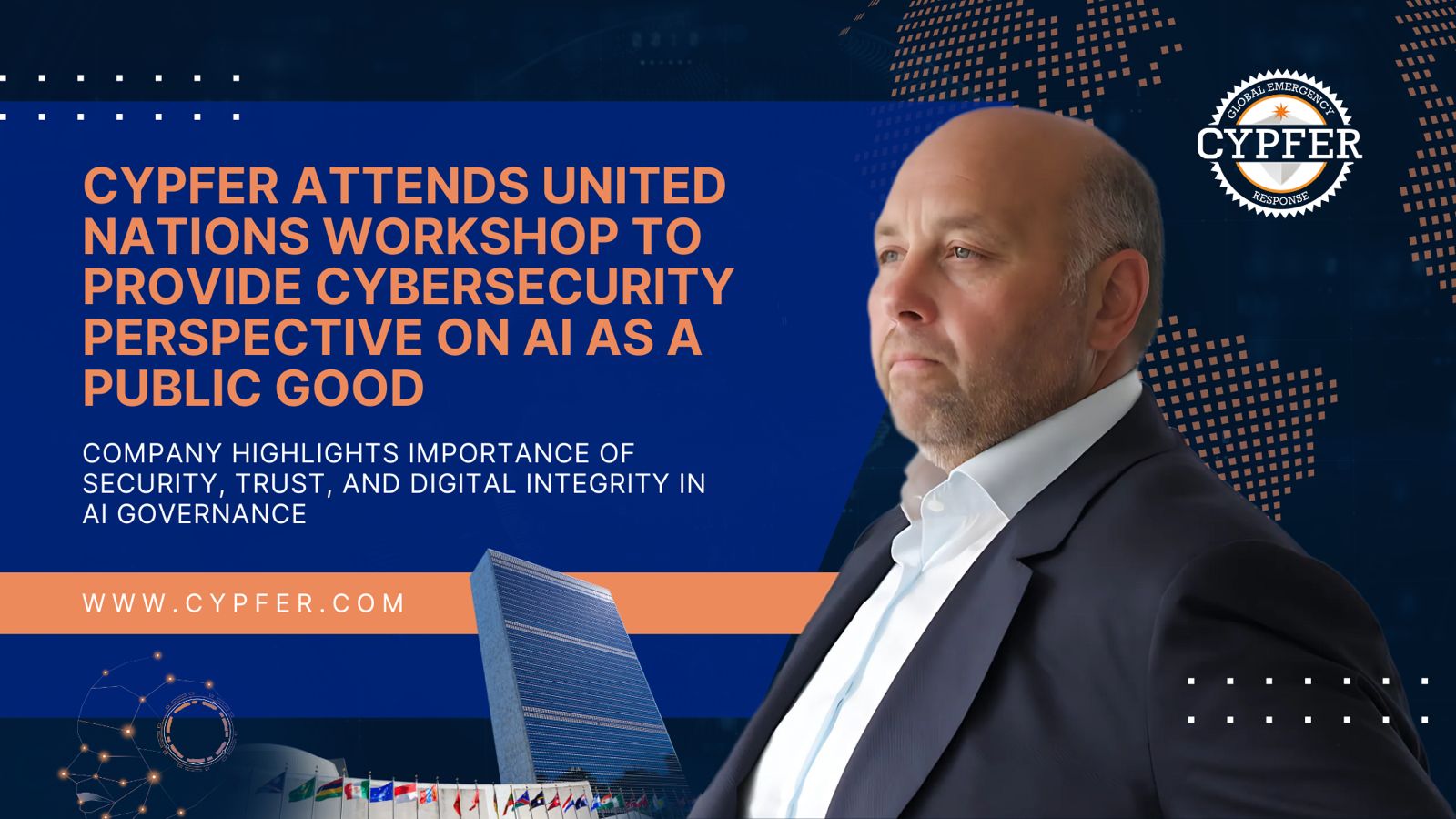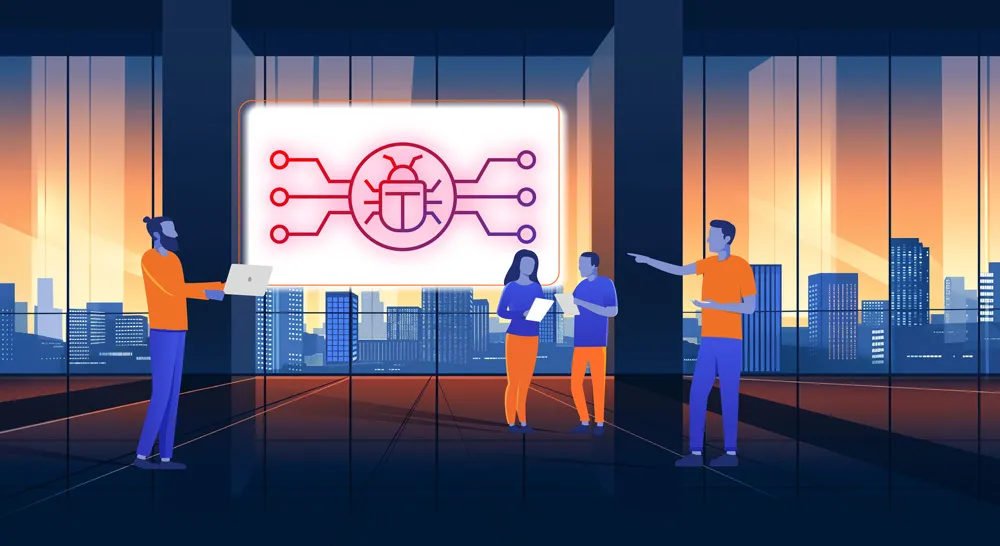
Why Links Still Get Clicked
Despite the billions spent on cybersecurity tools and frameworks, one overlooked threat continues to wreak havoc in organizations of every size. It is not a zero-day vulnerability or an insider breach. It is a simple, deceptive link.
Phishing remains one of the most effective cyberattack vectors because it preys on human behavior. It does not rely on sophisticated malware or brute-force tactics. It relies on curiosity, urgency, and trust. And it almost always starts with a hyperlink.
Understanding how malicious links are designed, disguised, and delivered is essential to building an awareness training program that actually works. At CYPFER, we work with organizations every day that have fallen victim to seemingly harmless emails. In many cases, the outcome could have been different with the right training in place. This blog breaks down how phishing links work and how your teams can be taught to spot them before the damage is done.
What Makes a Malicious Link Work
To stop someone from clicking a malicious link, you have to understand what made it convincing in the first place. Links are often dressed up to look legitimate, using common techniques that disguise their real intent.
Display Text vs Actual URL
Attackers often use clean, professional-looking display text to hide the real destination of a link. For example:
Click here to verify your account:
https://accounts.google.com/security-checkup
But the actual hyperlink underneath might look like:
https://goog1e-verify-alert.com/login
To an untrained eye, the difference is almost invisible. Training users to hover and inspect links is the first step in awareness.
URL Obfuscation
Obfuscation techniques make it hard for users to understand what a link is really doing.
Common tactics include:
- Using shortened links through services like bit.ly or tinyurl
- Encoding the URL with hexadecimal characters
- Using long strings of unrelated characters to bury the actual destination
Attackers rely on the fact that most users do not take the time to investigate these strings. They see a link and click.
Subdomain Manipulation
A domain like secure.yourbank.com looks legitimate. But attackers use tricks like:
- yourbank.secure-alerts.com
- secure-login.yourbank.services
In these examples, the real domain is not yourbank.com but something entirely different, often registered for malicious purposes.
Homograph Attacks
Homograph attacks use international character sets to mimic real domains. For example:
- Real: apple.com
- Fake: аррӏе.com (using Cyrillic characters that look identical to Latin ones)
Even cybersecurity professionals can fall for these at first glance, especially when displayed in common fonts.
The Psychology Behind the Click
Phishing attacks are not just about technology. They are about psychology. The link is only the delivery vehicle. The emotional triggers are what drive the user to take the bait.
Urgency
A message stating “Your account will be deactivated in one hour” is far more effective than a generic request. Urgency overrides rational decision-making and pushes users to act quickly without verifying the source.
Authority
When an email appears to come from a CEO, CFO, or a government agency, the perceived authority makes employees more likely to comply. Attackers leverage titles, logos, and internal tone to mimic trusted figures.
Fear and Compliance
Emails that mention audits, lawsuits, or policy violations are designed to scare recipients into clicking. No one wants to be responsible for non-compliance, and fear of repercussions can cause users to abandon caution.
Reward and Curiosity
Promotions, gift cards, exclusive offers, or insider information are all classic bait. If a user thinks they are gaining something by clicking, they are less likely to question the source.
A Real-World Example
Here is an example from a real attack observed by CYPFER’s incident response team.
Subject: Your Office 365 storage is full
Message:
Click below to extend your quota or risk losing access to your email.
Displayed URL:
https://microsoft365-support.com/quota-extension
Actual URL:
https://m1crosoft-secure-access.com/[email protected]
The display and message are professional and believable. The attacker spoofed Microsoft branding, used a near-identical domain, and targeted an executive assistant with access to payroll files. The link harvested credentials, and within minutes the account was used for internal thread hijacking.
Why Traditional Awareness Training Fails
Too many awareness programs fail because they treat cybersecurity like compliance rather than culture.
Common pitfalls include:
- One-size-fits-all content that does not account for employee roles or risk levels
- Long training sessions once a year with no reinforcement
- Simulations that feel obvious or irrelevant to real-world attacks
- Lack of executive participation or support
To build cyber awareness that sticks, organizations must move beyond check-the-box training and invest in realistic, engaging, and continuous education.
Building an Awareness Program That Actually Works
At CYPFER, we design awareness programs based on how people learn, how attacks happen, and how real-world conditions create risk. Here is what we have learned works best.
Interactive Simulations
Nothing teaches like experience. Realistic phishing simulations provide staff with safe opportunities to fail and learn. These should:
- Reflect current threat trends
- Target specific roles (finance, HR, executive)
- Be reviewed with feedback and remediation
Simulations need to be varied and unexpected to be effective.
Role-Based Content
Your finance team should be trained on vendor fraud and wire transfer scams. HR should understand credential harvesting and social engineering. Executives should be coached on impersonation risks and communication hygiene.
Training must be relevant to the daily decisions employees make.
Mobile and Multilingual Training
Phishing does not only happen on desktops. Many attacks are designed for mobile. Training should work across devices and in the languages your employees speak every day.
This is especially important for global organizations with regionally distributed teams.
Executive Involvement
Executives are often the most targeted users—and the least likely to complete training. That needs to change.
When leaders participate in simulations, share insights from incidents, and visibly support awareness efforts, employees are more likely to take it seriously. Cybersecurity must be modeled from the top.
Microlearning and Gamification
Short, focused lessons delivered regularly are more effective than one annual course. These can include:
- Weekly “phish of the week” breakdowns
- Quick two-minute lessons
- Scorecards and team challenges
The more you can make training feel relevant and even fun, the more likely it is to succeed.
CYPFER Certainty Awareness Training
CYPFER’s awareness training is not just another course. It is a dynamic program built from the trenches of real-world cyberattacks.
We bring:
Customized Modules
Content that fits your industry, attack surface, and business risk. Whether you are a law firm, manufacturing company, financial institution, or hospital, we tailor the training to your specific environment.
Expert-Led Delivery
Our training is designed and delivered by experts who have handled thousands of real incidents. When your team hears a first-hand story of how one employee’s click led to a multimillion-dollar breach, it resonates.
Continuous Measurement
We provide dashboards that show click rates, report rates, and user risk scores. We identify high-risk users and create plans to support them, ensuring no one slips through the cracks.
One Click Is All It Takes
It only takes one link. One moment of distraction. One email that seems just believable enough. That is all it takes for a cyber incident to escalate into a full-blown crisis.
The best line of defense is an educated workforce. But education must be strategic, ongoing, and grounded in reality.
At CYPFER, we deliver awareness training that changes behavior, not just policy. We help you build a cyber-resilient culture where your people are alert, informed, and ready to act.
Call to Action
Empower your people to spot the threats that technology cannot catch. With CYPFER Certainty Awareness Training, your workforce becomes your strongest defense.
Partner with CYPFER to train with purpose, test with precision, and defend with confidence.
Your Complete Cyber Security Partner:
Every Step, Every Threat.
At CYPFER, we don’t just protect your business—we become part of it.
As an extension of your team, our sole focus is on cyber security, ensuring your peace of mind. From incident response and ransomware recovery to digital forensics and cyber risk, we integrate seamlessly with your operations. We’re with you 24×7, ready to tackle threats head-on and prevent future ones.
Choose CYPFER, and experience unmatched dedication and expertise. Trust us to keep your business secure and resilient at every turn.

Get Cyber Certainty™ Today
We’re here to keep the heartbeat of your business running, safe from the threat of cyber attacks. Wherever and whatever your circumstances.
Contact CYPFER





